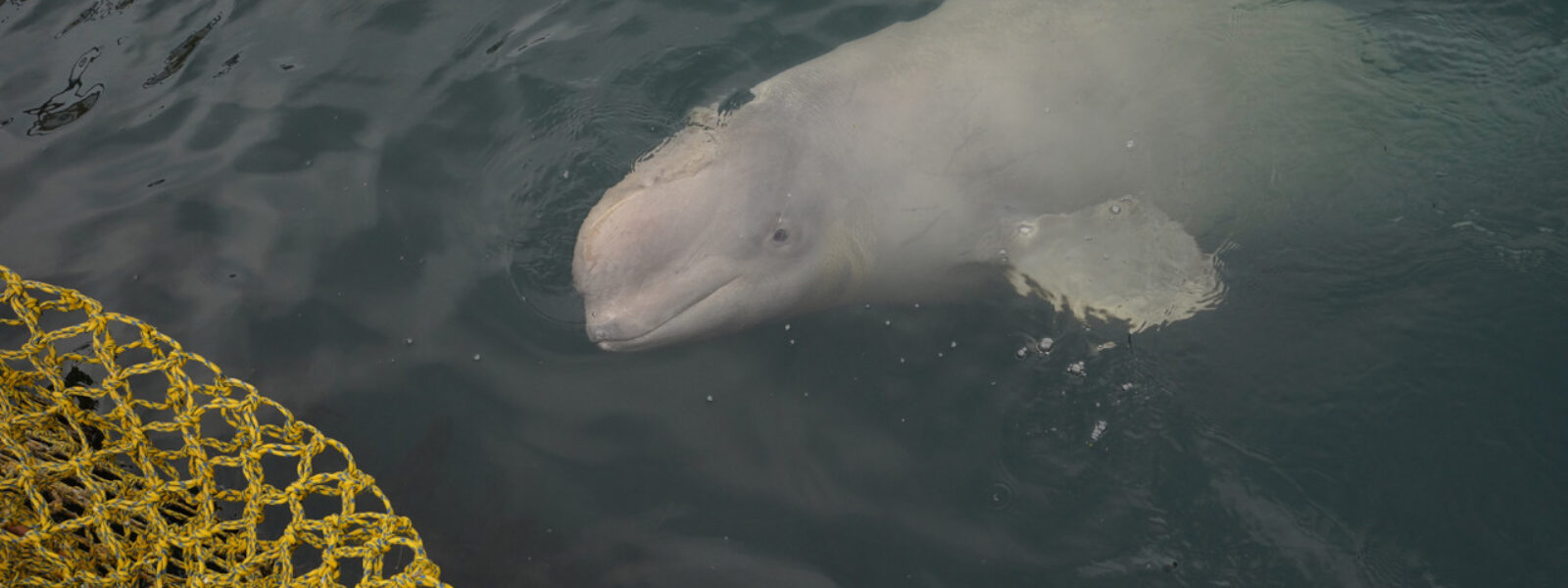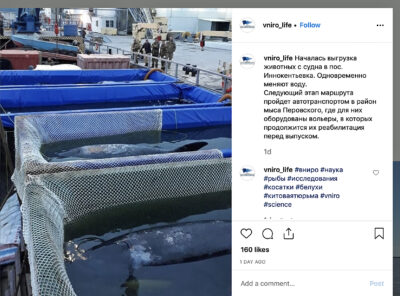

The International Marine Mammal Project (IMMP) of Earth Island Institute has been one of the lead organizations working globally to help return the Whale Jail whales of Russia to their home Sea of Okhotsk where they were captured last summer. We know that there are ten orcas and 87 beluga whales being held in the Whale Jail.
We know the Russian government contracted with the companies who originally caught the whales to manage the transportation and release plan.
There have been some posts on social media, concerned that the whales may be secretly sold off to China, but that does not appear to be the case. President Putin said publicly they are all to be released in the general area where they were caught, and it is doubtful anyone will go against that directive from the Kremlin.
The plan proposes that all of the captured whales are to be trucked to the inland city of Khabarovsk, on the Amur River, and then will be loaded on boats and floated down the Amur River into the Sea of Okhotsk. They will be unloaded in the village of Innokentievka, where presumably a facility to hold them is set up. The total release of all 97 whales is proposed to take four months.
Two orcas and six beluga whales, the first group to be released, are believed to have just been unloaded from their boat on the Amur River in the village of Innokentievka. The official word is that the travel to the release site would take six days. That is a very long, stressful time for the animals to be confined like that. There is some video on social media of the trucks moving from several days ago, as well as a photo, released by the government, of the unloaded boxes with the whales, but no information yet about the whales inside. Bad weather is complicating the issues for the whales.

Photo posted by Russian VNIRO (Russian Fisheries Ministry) of whales in transport boxes unloaded at Sea of Okhotsk.
We also do not know how the whales will be released. Will they be put in a sea pen to acclimate to the sea before release? What has been the protocol for rehabilitating these whales for release, and what has been done to ensure that they can catch live food after being fed in captivity for more than a year? We don’t know whether the release team will ensure that wild whales are frequenting the area near the release sites, so the whales can have the best chance at reintegrating. The Russian government stated that all of the whales will be given satellite tags and be tracked from the time of release.
Conservationists in Russia are calling on the government to provide more transparency on the release effort. There have also been concerns that recommendations for safety of the animals and maximum chances for successful reintroduction are not being fully followed.
The Russian government has evidently made a pledge to change the laws to prohibit captures of whales for “educational and cultural purposes,” the loophole that the whale captors have used to justify permits. However, no firm plans for making these policy and legal changes have been forthcoming.
We will continue to monitor the situation and report on findings by our colleagues in Russia. Please check back for further updates.
Photo of Whale Jail Beluga Whale by Harry Rabin.